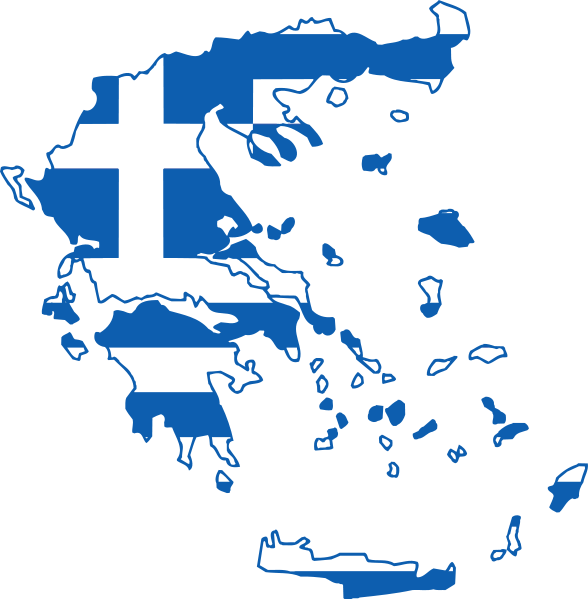Tourists and residents fled Greek holiday islands on Monday amid fears over more earthquakes.
Schools were closed and emergency crews deployed on the volcanic island of Santorini after a spike in seismic activity raised concerns about a potentially powerful earthquake.
Precautions were also ordered on several nearby Aegean Sea islands — all popular summer vacation destinations — after more than 200 undersea earthquakes were recorded in the area over the past three days.
Some residents and local workers headed to travel agents seeking plane or ferry tickets to leave the island and Aegean airlines has doubled the number of flights from Athens to Santorini for the next two days.
Mobile phones on the island blared with alert warnings about the potential for rockslides, while several earthquakes caused loud rumbles.
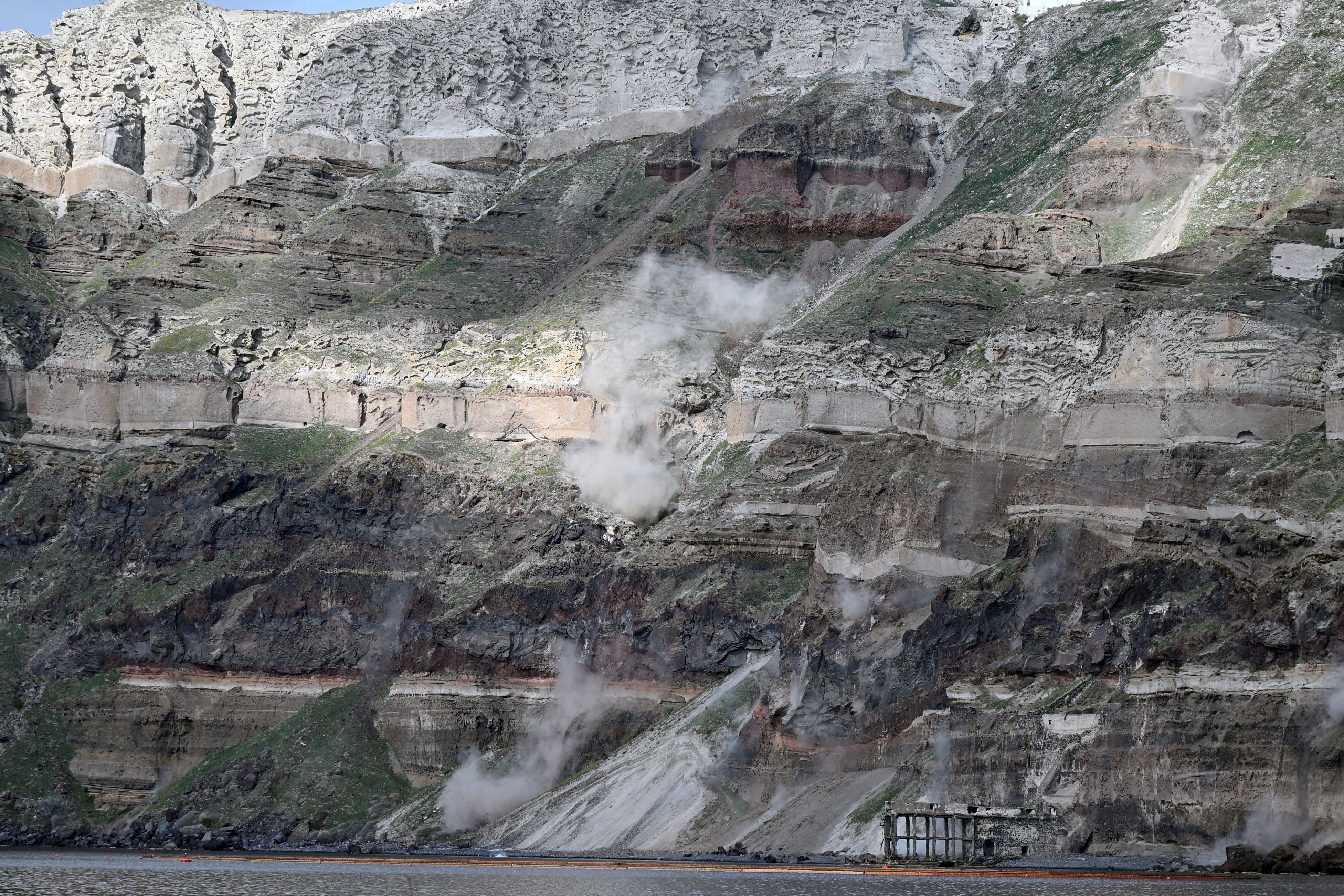
Authorities banned access to some seaside areas, including the island’s old port, that are in close proximity to cliffs.
“These measures are precautionary, and authorities will remain vigilant,” Civil Protection Minister Vasilis Kikilias said late Sunday following an emergency government meeting in Athens.”
“We have a very intense geological phenomenon to handle,” Prime Minister Kyriakos Mitsotakis said from Brussels, where he was attending a European meeting. “I want to ask our islanders first and foremost to remain calm, to listen to the instructions of the Civil Protection (authority).”
While Greek experts say the quakes, many with magnitudes over 4.5, are not linked to Santorini’s volcano, they acknowledge that the pattern of seismic activity is cause for concern. Government officials met with scientists throughout the weekend and on Monday to assess the situation, while schools were also ordered shut on the nearby islands of Amorgos, Anafi and Ios.
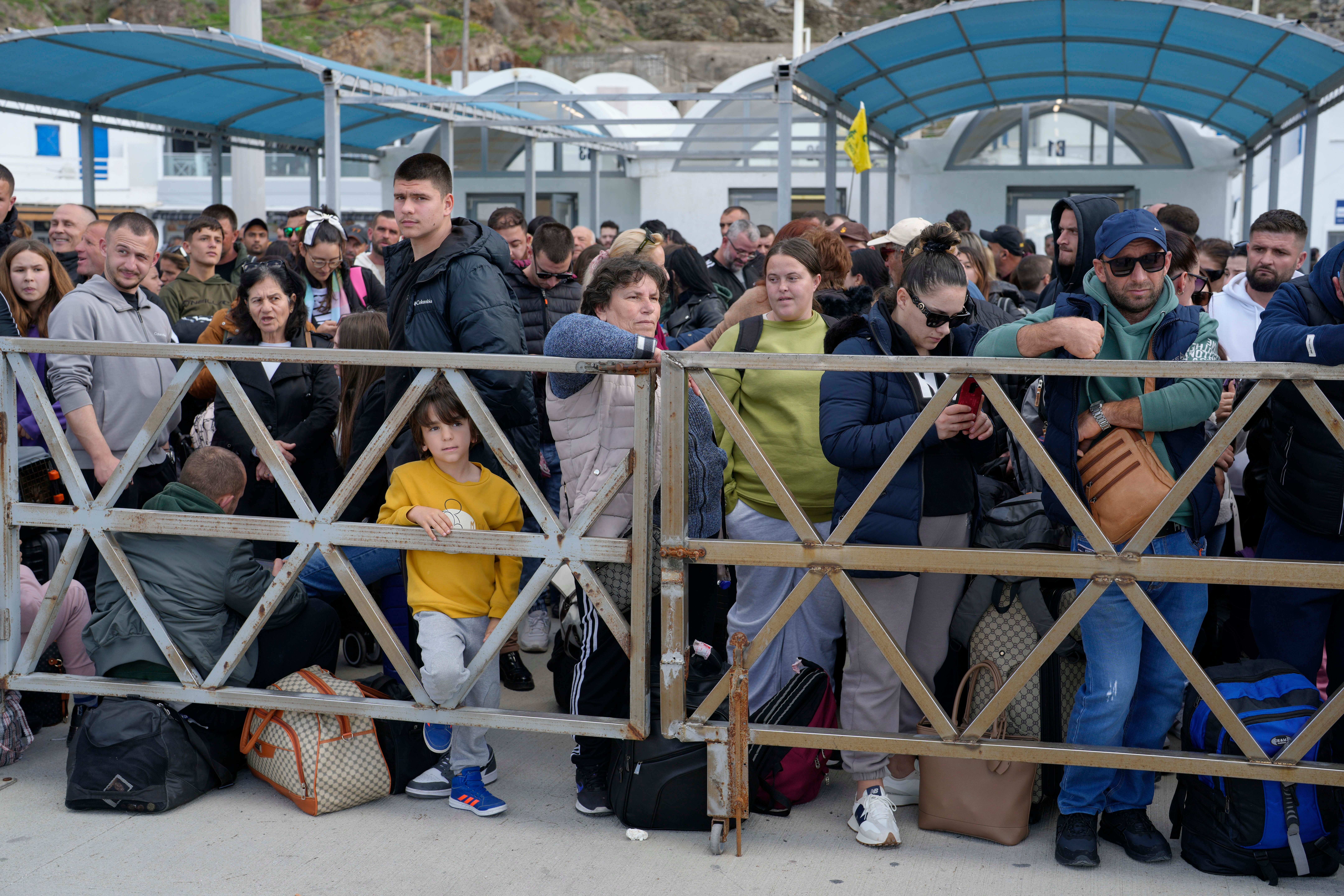
Residents are concerned the frequency of the quakes, which continued throughout Sunday night and into Monday. “I have never felt anything like this and with such frequency — an earthquake every 10 or 20 minutes. Everyone is anxious even if some of us hide it not to cause panic, but everyone is worried,” said Michalis Gerontakis, who is also the director of the Santorini Philharmonic Orchestra.
“We came out yesterday and performed. Despite the earthquakes, the philharmonic performed for a religious occasion,” Gerontakis said. “When you are playing, you cannot feel the quakes but there were earthquakes when we were at the church. No one can know what will happen. People can say whatever they like, but that has no value. You cannot contend with nature.”
Residents and tourists were advised to avoid large indoor gatherings and areas where rock slides could occur, while hotels were instructed to drain swimming pools to reduce potential building damage from an earthquake. Fire service rescuers who arrived on the island on Sunday set up yellow tents as a staging area inside a basketball court next to the island’s main hospital.
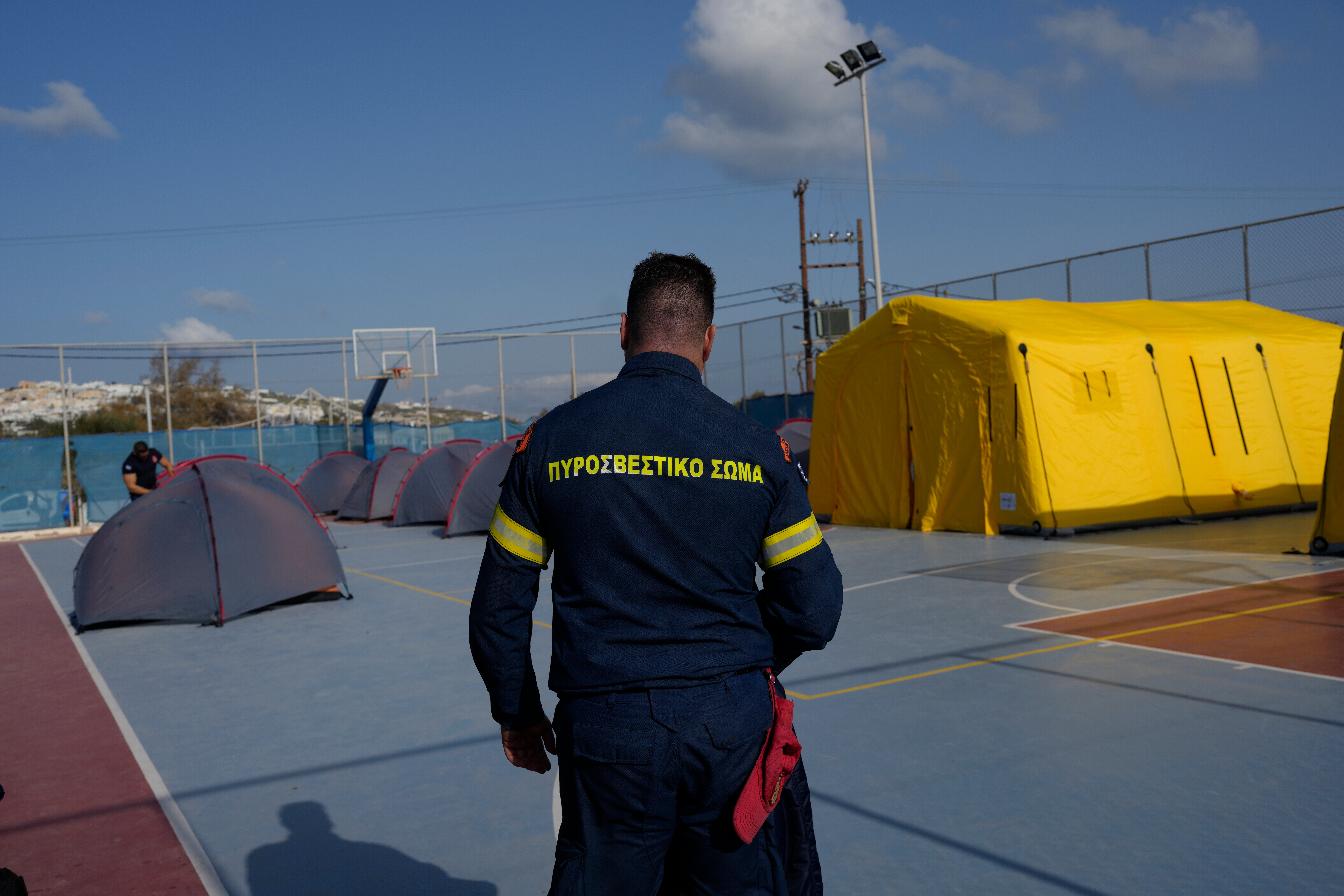
“We arrived last night, a 26-member team of rescuers and one rescue dog,” said fire brigadier Ioannis Billias, adding that many residents, including entire families, spent the night in their cars.
“We’ve had earthquakes before but never anything like this. This feels different,” said Nadia Benomar, a Moroccan tour guide who has lived on the island for 19 years. She bought a ferry ticket Monday for the nearby island of Naxos. “I need to get away for a few days until things calm down,” she said.
Others said they were willing to take the risk. Restaurant worker Yiannis Fragiadakis had been away but said he returned to Santorini on Sunday despite the earthquakes. “I wasn’t afraid. I know that people are really worried and are leaving, and when I got to the port it was really busy, it was like the summer,” Fragiadakis said.
“I plan to stay and hopefully the restaurant will start working (for the holiday season) in three weeks.”
South Korean tourist Soo Jin Kim, from Seoul, arrived Sunday on a family vacation. “We had dinner last night at the hotel and felt mild shakes about 10 times. But at midnight we felt a big one, a big shake so I checked the news report we are half-worried and half-looking to see what the situation is,” she said, adding she didn’t plan to change her travel plans.
Santorini volcano blew up 3,500 years ago Crescent-shaped Santorini is a premier tourism destination with daily arrivals via commercial flights, ferries, and cruise ships.
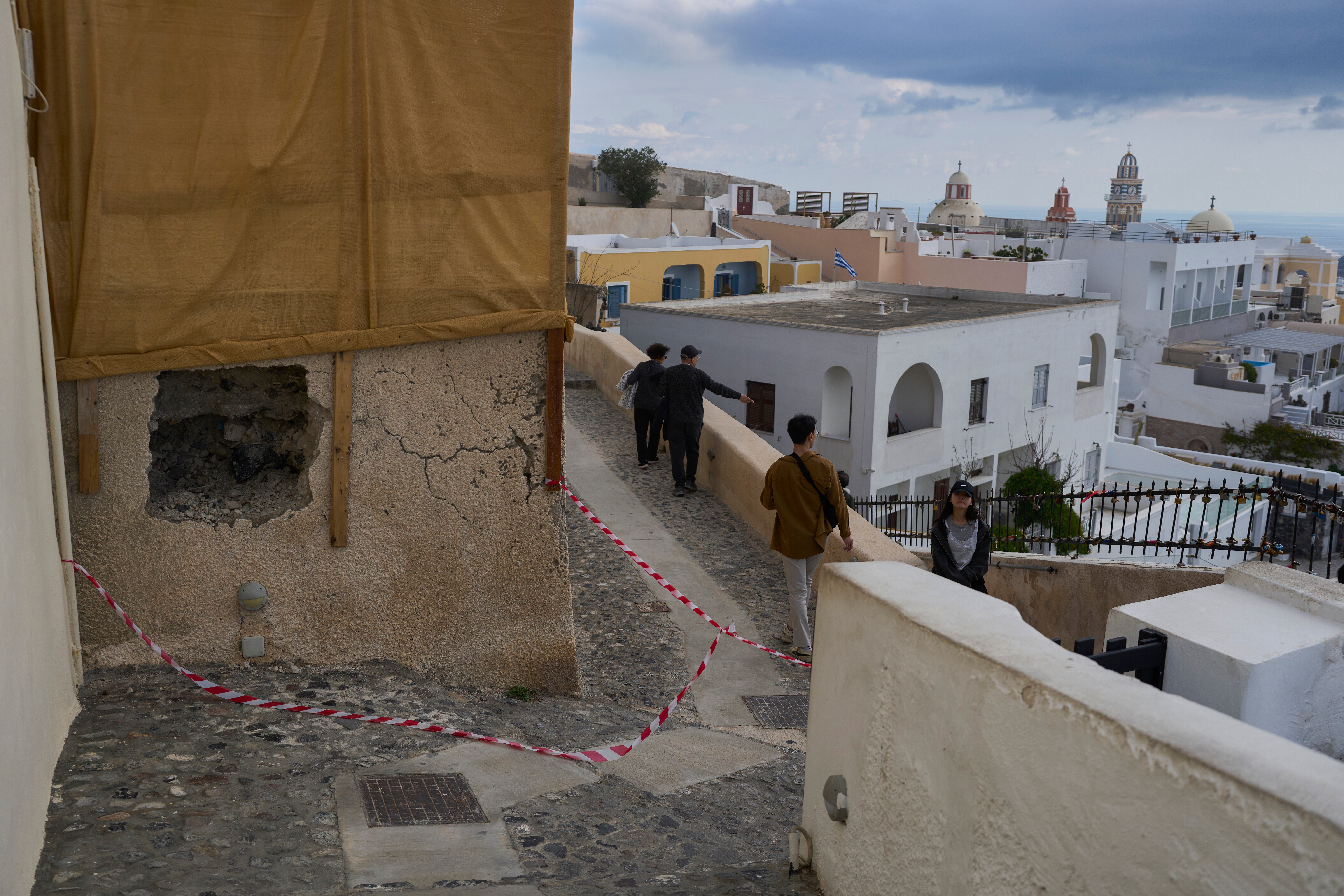
The island draws more than three million visitors annually to its whitewashed villages built along dramatic cliffs formed by a massive volcanic eruption — considered to be one of the largest in human history — more than 3,500 years ago.
That eruption, which occurred around 1620 B.C., destroyed a large part of the island, blanketed a wide area in meters (feet) of ash and is believed to have contributed to the decline of the ancient Minoan civilization, which had flourished in the region.
Although it is still an active volcano, the last notable eruption occurred in 1950. Prominent Greek seismologist Gerasimos Papadopoulos cautioned that the current earthquake sequence – displayed on live seismic maps as a growing cluster of dots between the islands of Santorini, Ios, Amorgos, and Anafi — could indicate a larger impending event.
Greece lies in a highly seismically active part of the world, and earthquakes are frequent. The vast majority cause no injuries and little or no damage, but the country has also seen deadly quakes. Earthquakes can’t be predicted, but authorities are taking measures as a precaution.
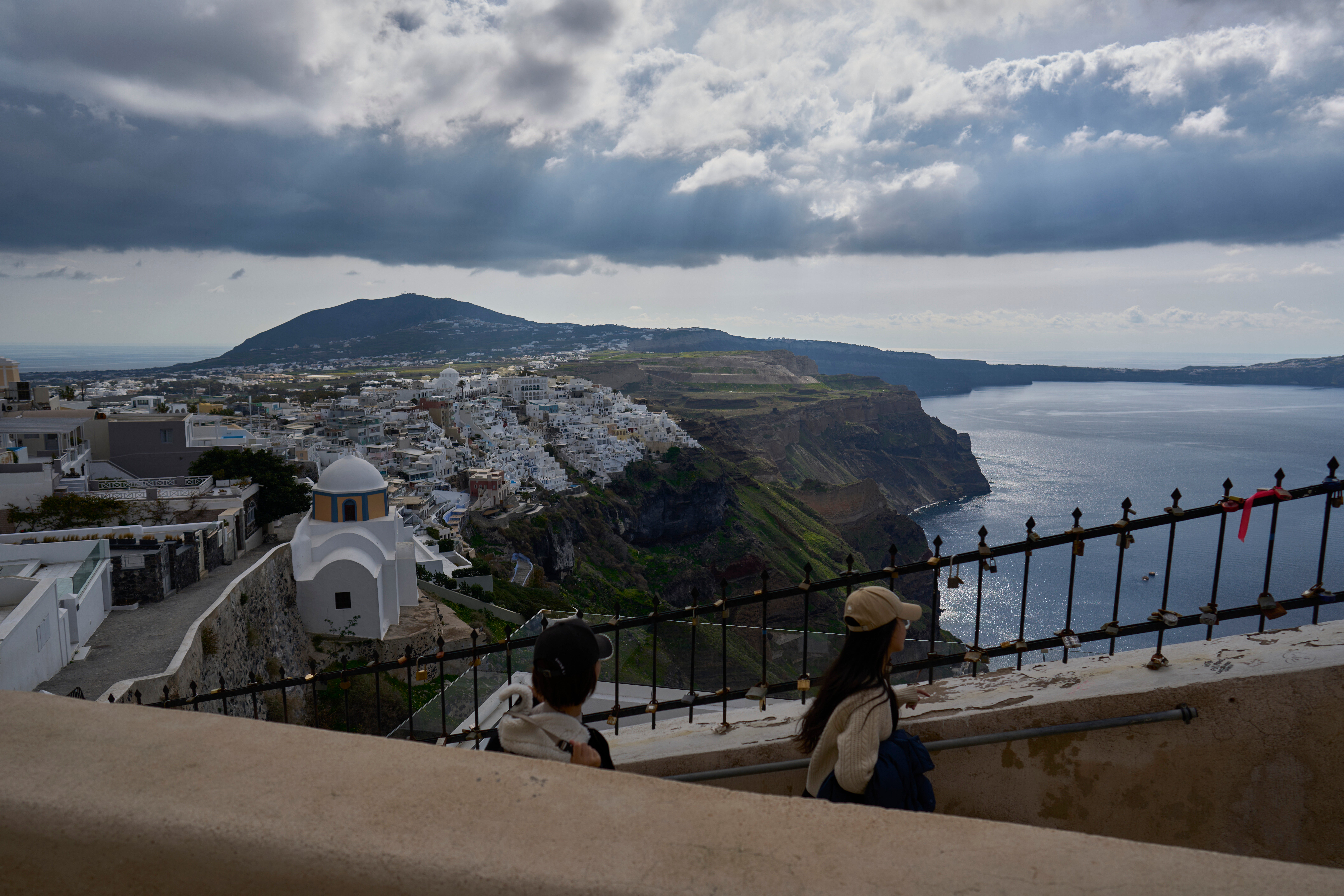
Here’s a closer look at the current situation:
About 200 quakes with magnitudes between 3 and 4.9 were registered from Saturday to Monday afternoon between Santorini and the nearby island of Amorgos, authorities said.
Seismologist Gerasimos Papadopoulos said on Greece’s ERT television that the seismic activity began on Jan. 24, but intensified Saturday, with increasing frequency and magnitudes.
Santorini mapped:
The fault line producing the current earthquakes runs for about 120 kilometers (75 miles), but only the southern part between Santorini and Amorgos has been activated. The earthquakes have epicenters beneath the seabed, roughly 30-40 kilometers (18-25 miles) from any of the islands. Scientists say this is good news, as an epicenter beneath land could potentially be more destructive. But a large quake could also trigger a tsunami, so authorities have warned people to stay away from coastal areas and head inland if they feel a significant earthquake.
So far, there has been no damage or injuries reported, although some minor rock slides have occurred.
Could the earthquakes trigger a volcanic eruption?
Santorini lies along the Hellenic Volcanic Arc, which stretches from the Peloponnese in southern Greece through the Cycladic islands.
Last Wednesday, Greece’s Climate Crisis and Civil Protection Ministry announced monitoring sensors had picked up “mild seismic-volcanic activity” inside the island’s caldera. Similar volcanic activity had been recorded in 2011, when it lasted for 14 months and ended without any major issues.
Simon Calder’s advice
What are your rights if your destination is seismically active?
- Fears of a strong earthquake on the Greek island of Santorini are rising after over 200 undersea tremors occurred over the weekend.
- Schools have been closed and airlines are providing extra flights from Santorini to Athens for evacuations.
- The Foreign Office advises avoiding certain ports and old buildings on Santorini, as well as large indoor gatherings.
- Travellers with existing bookings who wish to cancel due to earthquake concerns are unlikely to receive refunds, as seismic activity is a known risk in Greece. Some holiday companies may allow destination changes.
- Current travel insurance policies remain valid as the FCDO hasn’t issued a travel warning.
- Read Simon Calder’s guide to your rights.
Another volcano — a submarine one called Kolumbo — lies about 8 kilometers (5 miles) northeast of Santorini, nearer to the epicenter of the current earthquakes.
But seismologists say the quakes aren’t related to the volcanoes.
A meeting between government officials and scientists determined that seismic activity within Santorini’s caldera “remains at the same low levels as in recent days,” the Civil Protection Ministry said Monday, but that it was “particularly increased” between Santorini and Amorgos.
Scientists are still trying to determine definitively whether the multiple quakes are foreshocks — smaller earthquakes before a major temblor. Papadopoulos said that there was a “high probability” they are.
Santorini’s main villages are built along the rim of the volcano’s caldera — producing the dramatic scenery of cascading whitewashed houses and sunset viewpoints that make the island so popular, but also raising concerns in the event of a major earthquake. The sheer cliffs also make some areas prone to rock slides.
What’s the history?
The fault line that has been activated was the site of Greece’s largest quake in the last century: a 7.7 magnitude temblor dubbed the Amorgos earthquake that struck in 1956, triggering a roughly 20-meter (65-foot) tsunami, causing significant damage in Amorgos and Santorini and killing more than 50 people.
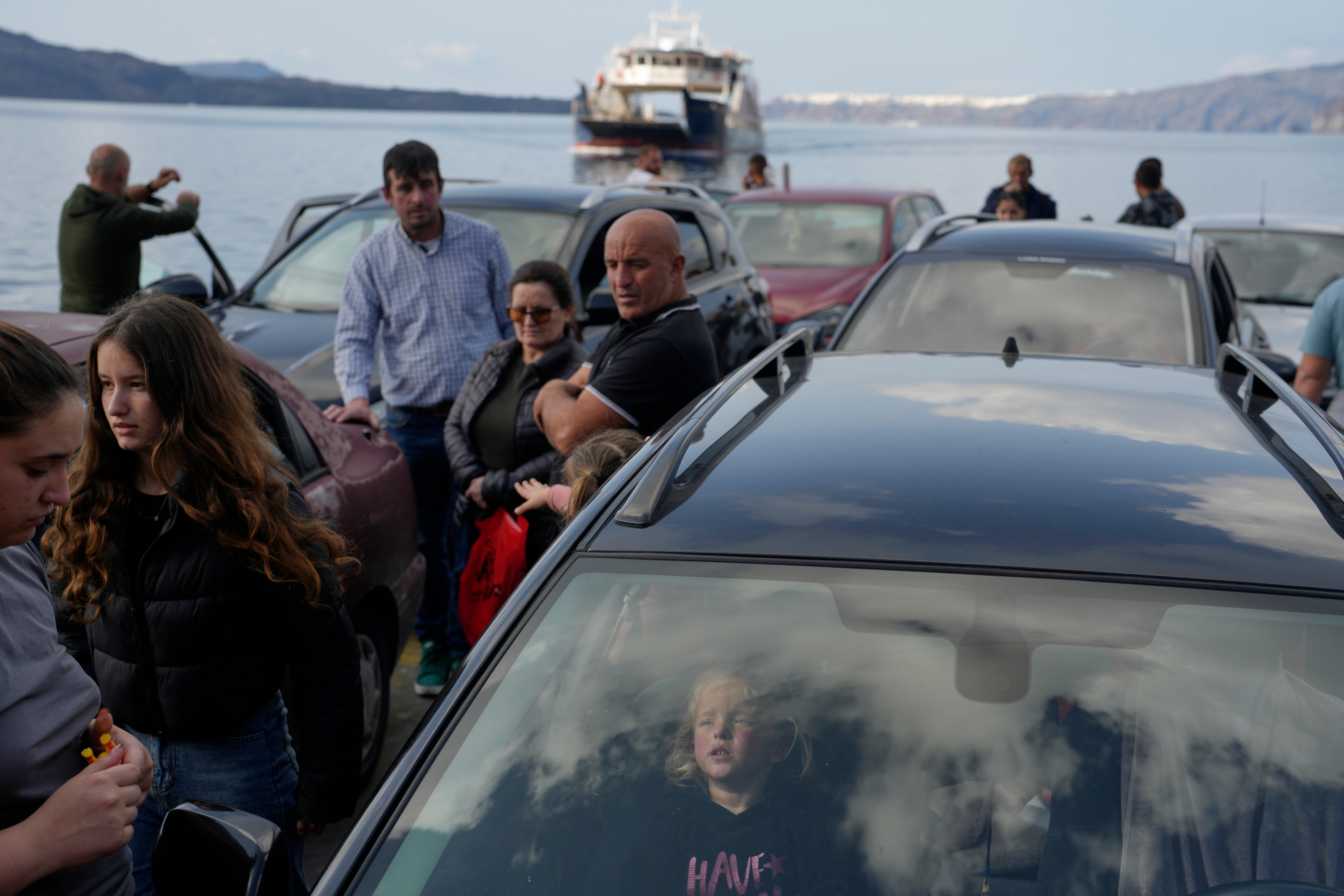
Santorini is also the site of one of the largest volcanic eruptions in human history. Known as the Minoan eruption, it occurred around 1,600 B.C. and destroyed much of the formerly round island, giving Santorini its current shape. The eruption is believed to have contributed to the decline of the ancient Minoan civilization.
Although it’s still an active volcano, the last notable eruption occurred in 1950.
“What we must realize is that the Santorini volcano produces very large explosions every 20,000 years,” Efthymios Lekkas, seismologist and head of the scientific monitoring committee for the Hellenic Volcanic Arc, said last week. “It’s been 3,000 years since the last explosion, so we have a very long time ahead of us before we face a big explosion.”
